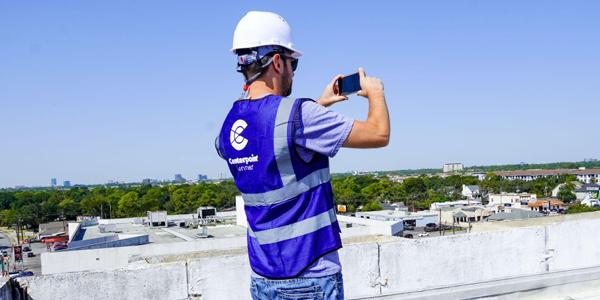MRA Issues U.S. Canadian Residential Metal Roofing Industry Outlook For 2020

Leading trade organization points to climate extremes, heighten environmental awareness and resilient home trends for sustaining growth.
With the first month of the year solidly underway, forecasts for the 2020 U.S. and Canadian metal roofing market are becoming clearer as the prime spring and summer roofing season approaches.
According to the Metal Roofing Alliance (MRA), the industry’s leading nonprofit trade association group, the metal roofing business is predicted to have another strong year, holding steady and even trending up slightly in 2020. That assumption is based on FW Dodge market share data, which states that the 2018 U.S. metal re-roofing residential sector was 13 percent of the overall total (up from 11 percent in 2017), making it the second most preferred roofing material.
“While it’s impossible to say exactly what this year may hold, based on what we’ve seen and the latest economic conditions, we are confident that residential metal roofing will continue to experience strong demand and gain in popularity as U.S. and Canadian homeowners become even more familiar with its many benefits,” said Renee Ramey, MRA Executive Director.
On the regional level, the U.S. Southern and Midwest regions are driving the most interest in metal roofing. The MRA fielded the most consumer inquiries and interest from states including Alabama, Kentucky, Mississippi and Tennessee, with Iowa, Kansas, Minnesota, Missouri, Nebraska and the Dakotas also leading the pack. Interest in metal roofing also continued to spike in Florida and Texas, two areas that suffered extreme weather events and subsequently had strong repair and remodeling activity in 2019.
In fact, the top reasons homeowners typically give for wanting a metal roof include the need for greater protection and reliability in extreme weather and climate conditions and longevity (long-term value for the dollar spent). They also increasingly appreciate the wide variety of styles and color options they can get with metal roofs as compared to the limited choices available with other materials, according to MRA consumer research studies.
The MRA predicts that recent global events, such as the devastating wildfires in Australia, may have a spillover effect among homeowners in the states and Canadian provinces that are particularly susceptible to these types of dangers. That includes mountain states such as Colorado, Idaho, Montana, Utah and Arizona, which still lag behind other regions for metal roofing adoption but have high potential given the threat of wildfires. Indeed, interest in metal roofing has spiked recently in California and other areas where wildfire danger has already hit home.
“Durability is the biggest reason why so many homeowners are turning to metal roofing in Canada,” said Philippe LaPlante of Ideal Roofing Co., an MRA member based in Canada. “Customers are looking for a lifetime roof with less work and headaches as possible—something they can protect their house and family with by putting on just once, and having that security last for 40 to 50 years or more.”
Heightened environmental concerns among U.S. and Canadian citizens also may pique greater interest in metal roofing this year. With residential solar systems and net zero homes becoming increasingly common, the long term benefits derived from installing quality metal roofs are being recognized for lowering energy use, reducing a home’s carbon footprint and preventing waste, since metal roofs can be 100 percent recycled at the end of their long life.
Yet even today, lingering misconceptions and issues remain somewhat of a barrier to residential metal roofing’s growth. The lack of qualified, experienced installers means homeowner demand is outpacing supply in certain regions. In some locations, outdated neighborhood rules and restrictions that don’t reflect today’s best practices for resilient home building can be an obstacle to getting more protective metal roofs installed. Some homeowners still falsely believe metal may be noisier than other types when in fact, properly installed metal roofs transmit no more sound than other types of roofs. As is the case for all roofing industries, a handful of disreputable fly-by-night manufacturers and/or installers can undercut the market by selling and installing inferior material and coatings, tarnishing the industry’s overall reputation.
For 2020, MRA’s top priority will include confronting these issues by increasing homeowner education and access to accurate, up-to-date information, generating awareness of the many benefits of quality metal roofing and emphasizing the quality standards set forth by its manufacturer, contractor and ancillary members.
“MRA members represent the best in the business and it is through their efforts, their level of professionalism and commitment to support the overall industry that the entire market benefits,” said Ramey. “That’s why we’ve continued to see metal roofing continue to gain share and more homeowners choose a quality metal roof to help protect their home. Thanks to this dedication to the industry’s collective success, the future is bright for the metal roofing business”
Become an MRA member.
About Metal Roofing Alliance (MRA)
Representing metal roofing manufacturers in the United States and Canada, the Metal Roofing Alliance (MRA) was formed in 1998 as a nonprofit organization to help educate consumers about the many benefits of metal roofs. The main objective of MRA is to increase awareness of the beauty, durability and money-saving advantages of quality metal roofs among homeowners, as well as to provide support for metal roofing businesses and contractors. For more information, visit MRA.





















Comments
Leave a Reply
Have an account? Login to leave a comment!
Sign In